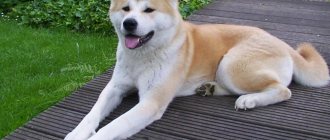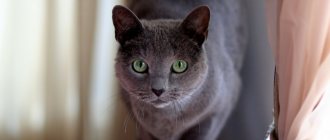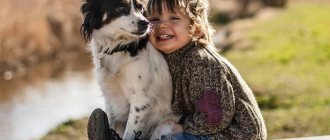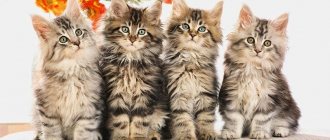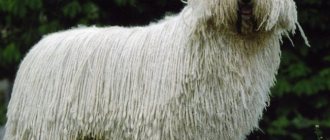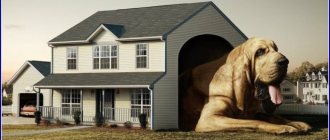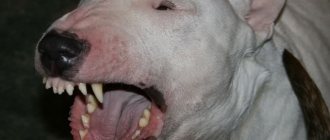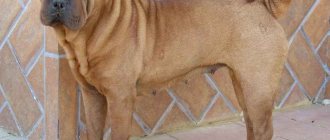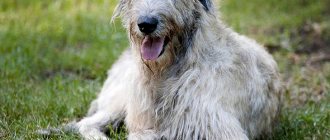German boxer
Quirky, loyal, energetic and agile, the Boxer makes an excellent guard dog and companion dog. However, despite his energy, the Boxer will be equally happy relaxing with you in front of the fireplace or lying on the rug. The German boxer is part of a trend in the United States that sees Americans starting to adopt more mastiff-type dog breeds.
Review of breeds from America
- Aussie (Australian Shepherd). Yes, don’t be fooled by the name, the birthplace of the breed is the USA. The breed is beautiful, somewhat similar to a mixture of border collie, collie and retriever, but the breed line comes from border collies and tigers, although it has external similarities with other breeds. But the Aussie experienced a real boom and flourishing at the end of the 19th century, when sheep from Australia began to be brought to America for the development of the wool market. Along with the sheep, the first blue dogs also arrived in the New World, which quickly won the love of farmers with their talents for racing, and were also distinguished by their lack of aggression towards sheep. Barking and running in a ring are the main working tools of the Australian Shepherd at work.
The breed gained fame not only in work - they performed acts and tricks at fairs, and Disney filmed smart, fluffy dogs in his films. The breed acquired a standard in 1977. Modern Aussies are wonderful companions, ideal pets for families with children of all ages. Like most dogs, they do not like to be alone and require active walking. It is quite common, but every year its popularity is gradually growing and more and more families are considering this American dog breed as a pet.
- Alaskan Klee Kai. Beautiful, but complex huskies give no rest to anyone, which is why in the world of experimental cynology, research is always underway on the topic of crossbreeding of this breed with smaller and calmer dogs. The Alaskan Klee Kai dog breed was no exception. This is a new American dog breed that received a standard in 1995. We can thank Alaska resident Linda Sparling for this wonderful baby. In the 70s, she met an unusually small dog who looked like a husky that had shrunk after an improper wash cycle - the dog was exactly the same, but small. Linda's heart was won, and then the considerable interest of neighbors and passers-by pushed the woman to intensive breeding and selection of short individuals of northern dog breeds in order to achieve a stable litter of miniature huskies. All her efforts were rewarded in 1987, when she gave one of the puppies from a successful experimental litter to her friends. Sparling literally woke up famous, and the flow of requests for little fluffies did not expect to end.
In 1988, Klee Kai already had a group for the exhibition, and the owners of the puppies became enthusiastic breeders and actively helped Linda with drawing up a description of the breed and clarifying all the characteristics. Alas, not all owners approached the issue of breeding responsibly and tried to sell more popular puppies than to maintain the purity of the still unstable new breed. Now the American Association of Rare Breeds of Dogs is monitoring the preservation and stabilization of the breed, because the dog turned out to be truly wonderful. Like huskies, Klee Kais are very active, they don’t really know how to bark, but they can perform a guard role quite well. Of course, due to its height, all the rudiments of a guard fade into the background, but a Kli-Kai can growl at a stranger quite loudly. In terms of training, they require persistence and regular training. You should not expect that anyone can handle a mini-husky - the breed is not intended for inactive people and those with no experience in raising dogs. The touching American gets along more than well with cats, children and other dogs. - Alaskan Malamute. The American large breed of dog, the Alaskan Malamute, is almost the first breed that began to live next to humans as a domestic animal. Genetic studies have shown that this is the closest breed to the wolf. The geography of the ancient remains of Malamutes showed that before settling in North America, the breed lived in Asia, from where it moved with nomadic tribes to harsh cold latitudes. Nowadays it is an indispensable sled breed, but initially it performed a guard function. Selection proceeded by itself - weak individuals died, and strong ones gave birth to offspring and rooted their gene pool among the breed flock in the settlements of local residents. Now there is unprecedented interest in northern draft breeds. Of course, it’s hard to argue with the beauty of the Malamute - gorgeous fur, meaningful eyes, wolf-like appearance, but this is not a suitable dog for a family. Education and training are required at a professional level, and it is very difficult to provide the required load. A dog can feel good only on a farm, where it will be used as a working dog, and not just a beautiful inhabitant of the yard.
- American Akita Inu. The breed came to America after World War II as a trophy. Soldiers returned from foreign shores and brought home fluffed ivy puppies. But America could not help but influence the breed, and the American Akita differs from the Japanese version in its stockier build. The danger of the breed is that, having received a huge surge in popularity due to the movie “Hachiko,” everyone who had the means and intelligence began to have puppies.
But an Akita is a good guard and companion only if it was raised and trained by an experienced person, and the authority of the owner never allows the dog to doubt his leadership. Stubbornness is also a calling card of the breed, no matter whether Japanese or American. Therefore, before getting this plush, faithful friend, you should think carefully about whether you can cope with such a complex character.
- American Bully. If all bodybuilders suddenly turned into dogs, they would simply join the pack of American Bullies. The roots of the breed lie among fighting breeds, but it was the bully that began to be bred as a scary dog on the outside and a kind dog on the inside. Responsible breeders are still culling aggressive individuals and with each litter there are fewer and fewer of them. Bully is a young American breed of large dogs, it received recognition only in 2004, but due to the lack of targeted selection and many subspecies in size, it is still not accepted by the FCI as an independent breed.
In general terms, the breed has proven itself to be an affectionate companion that requires a firm hand in training and daily supervision. We tolerate children, but do not accept other animals. Strangers are still discouraged from approaching the American Bull. But despite the instability of the species, all dogs of this breed line show tolerance to the daytime absence of the owner. The bull is sad, but does not become depressed if the owner regularly goes to work and leaves the pet to wait until the evening. - American Bulldog. A modern ambulant has a standard set of criteria for a breeder: a steady hand, experience in raising dogs, time for activity and exercise with the dog - only then will you achieve the revelation of all the positive qualities of the breed. It is possible to get a pet from an American Bulldog, but it is difficult. The history of this large American dog breed began in the 15th century, when animal fighting was popular in Mother Europe and the New World.
The breed was bred to be super hardy, strong, aggressive, capable of fighting until they lose consciousness. But when fighting was banned and bulldogs began to be forgotten, such dogs were of no use on the farm. The breed came to America with forced migrants, who were forced to settle new lands in exchange for freedom from the punishments of the Old World courts. It was there that the breed showed itself as a ferocious watchman who could be trusted to patrol the territory of the settlement. Alas, the breed has remained unrecognized by the FCI, although many regional cynological associations have already recognized the Ambule as an independent dog breed.
- American Cocker Spaniel. You have already correctly thought that overseas only fierce fighters with a ring background are held in high esteem. But no, nothing beautiful is alien to America, for example, a miniature long-haired interpretation of the English cocker - the American cocker spaniel. This is a super-active dog, only 35 centimeters at the withers, cannot stand loneliness from the word “absolutely”, and can live both in an apartment and in a house. It requires patience and perseverance from the owner, because this is a rare manipulator and cunning dog, and this breed also has a phenomenal sense of smell, which is often used by rescuers in their work, and at home such a dog can independently look for something tasty while the owner is not looking. The ancestors of the breed came to the mainland with the first settlers, but unlike many breeds transformed to the New World, they still received their own separate standard back in 1946.
- American Staffordshire Terrier. If you want a mini guard, then you should consider the American Staff. This is a stocky, up to 48 centimeters at the withers, strong, capable of performing a security function at the highest level. Raising a worthy city dweller from an Amstaf is not difficult - the active dog is well trained, and if you take a course with him at a dog training school, the breed will not cause you any problems. Another advantage of this formidable-looking American is his stable psyche, which not all former ring fighting dogs can boast of.
Socialization is successful and by one year the puppy gets used to not reacting to the rhythm of the city at all and you can safely walk with him in parks and public dog areas. The FCI recognized the breed back in 1971. In our country, the breed is considered dangerous, but only because of problematic and irresponsible, almost uncontrolled breeding in the 90s. At that time, it was fashionable to have a ferocious dog, but stocky and nimble Amstaffs were practically not trained, which is why a large population of the breed with behavioral disorders was bred in the country.
- Boston Terrier. The history of the breed began in 1890, when Robert Hooper acquired a cross between an English terrier and an English bulldog. The puppy grew into a strong little dog, who quickly found a girlfriend and began breeding a new American breed of companion dogs. The emphasis in selection was on achieving elegance and subtlety of lines. By nature, she is an ideal city dog who is willing to go for a walk, can accompany her at work, and at home on the sofa she also really likes to watch a TV series with her owner. A non-conflict dog is completely unsuitable for the role of guard, but is this the only reason we love dogs? The Boston Terrier is a true friend, who, however, snores throughout the house.
Poodle
Another German breed, the poodle, has dense curly hair and the highest intelligence (ranks 2nd on the list of the smartest breeds). The poodle has 3 varieties: toy, small and large. Although the Poodle is not the most popular breed in the United States today, it, like the Labrador, has been one of the most popular breeds in America for many decades.
History of the American Akita
American Akita
The word "American" in the breed's name can be confusing when it comes to its origins. The second name - large Japanese dog - is more eloquent in this regard: its homeland is the Land of the Rising Sun. But how did it happen that the Akita suddenly became American?
The ancestors of the American Akita are the Japanese Akita Inu, which were originally used for hunting and guard purposes. Several centuries ago they were called differently: Matagi-Akita. Later they began to be used in dog fighting, which became especially popular at the turn of the 19th and 20th centuries. In pursuit of monetary gain, owners sought to “improve” their dogs, making them larger and stronger. For this purpose, they were crossed with breeds brought to the islands such as mastiffs and shepherd dogs.
However, as a result of these manipulations, the classic features of the breed began to blur, deteriorate, or even be completely lost. The damage caused to the Matagi Akita was noticed at a dog show held in Tokyo in 1914. Soon, pure representatives of the breed were declared natural monuments, and their crossing with representatives of other species was strictly prohibited. The breeders had more work to do: they did everything possible to return the Matagi Akita to its original characteristics.
Before these magnificent dogs, which became the source of national pride for the Japanese, had time to recover from the blow inflicted on the breed by irrepressible human greed, World War II broke out. By order of the government, all breeders donated their pets to the needs of the front. As is known, the end of the war was marked by the surrender of Japan in 1945. Returning to their homeland, US military personnel decided to take with them several puppies they liked. It was they who became, a few years later, the progenitors of a new breed. But the actual classic Akita Inu remained on the Japanese Islands after the war, no more than 20 individuals.
Japanese Akita Inu
At the same time, overseas the breed began to gain widespread recognition and developed at a rapid pace. At first it was called a large Japanese dog. But in the States, work on the breed was not synchronized with the Japanese - it proceeded in parallel and, as they say, on its own path. Japanese breeders tried to negotiate with their American colleagues regarding her common pedigree, but in vain. They did not even allow dogs declared natural monuments on the islands to be exported to the United States. All these measures did not stop the Americans. As a result, over time, the overseas Akita began to differ from the Japanese one in both appearance and character. And then it received a new name - American Akita.
In 1956, a club for the newly formed breed was created, recognized by the American Kennel Club only in 1972. The “breed war” with Japan continued until 1992: for two decades, the kennel clubs of both countries did not recognize each other - only the Japanese Akita Inu was registered with the Fédération Cynologique Internationale (FCI). The official division of the breeds occurred only in 2000, when the FCI approved the standard for the overseas Akita.
TOP 10 popular dog breeds in the USA
The American Kennel Club annually ranks the most popular dogs among Americans. The TOP 10 includes individuals of German, British and Canadian origin.
Labrador Retriever
The first place in the ranking was taken by a breed with Canadian roots - the Labrador Retriever. This dog is considered the most loyal. A muscular and strong individual with a large muzzle, a wide pigmented nose, and has a hard, short and straight coat of black, chocolate or fawn color.
Representatives of the breed are not aggressive, friendly, inquisitive and intelligent. Labradors are obedient, good with children and are therefore considered an exemplary family breed.
Labradors do not tolerate loneliness well and should not be left alone for long periods of time.
Golden retriever
A pet of this breed can have different origins:
- Canadian - in coat color they resemble American individuals, and in body type - European ones;
- American - have bright golden fur, medium build and tall height;
- European dogs have a light color, there are even white ones, and in comparison with American dogs they have a wide muzzle and shorter legs.
The Golden Retriever is often confused with the Labrador. The representative of the second breed has a denser build and short hair. But they are similar in character. The Golden Retriever is just as kind, smart and friendly.
American dog breeds: varieties and selection tips
join the discussion
Share with your friends
American dogs are a fairly popular category of four-legged pets. Animals are divided into several groups, each of which has its own individual characteristics and characteristics.
Content
- Brief history of the breed
- Description of the breed: standards and appearance Dimensions, weight and anatomical characteristics
- Color and coat type
- Possible breed defects
- Temperament and character
- Hygiene procedures
How to choose?
First of all, you need to figure out what goal you are pursuing by getting a pet. If your choice falls on fighting dogs, then remember that they need proper training, but companion dogs will not be able to perform any functional duties. Having decided on a specific category (fighting, hunting, sled or companion dog), you can begin to determine the most suitable breed.
Particular attention should be paid to studying the physiological and mental characteristics of the animal. Make sure that this or that breed can live in your apartment or house, that it will not show aggression towards other pets living with you or towards children.
Also, read the rules for owning a dog. Make sure you can follow all the recommendations of the experts.
For more information on the characteristics of the American Bulldog breed, see below.
When a person had a need for a dog to perform a certain role
... he tried to breed a breed capable of coping with this role, for example, more powerful dogs were bred for guarding, faster ones for hunting, etc.
One of the reasons for the meager list of American dog breeds is the tendency of American breeders to breed fighting dog breeds or large guard dogs.
The second reason is the love of American citizens for European and Canadian dog breeds.
Among domestic dog breeds, truly domestic dogs were bred, with a friendly disposition and an easy-going character.
American dogs are a source of pride for American families, which is why they are often adopted by local residents themselves.
Care and maintenance
American Shorthairs are a low-maintenance breed. To maintain their activity and good health, the owner only needs to perform simple periodic procedures.
Hygiene procedures
To keep a pet healthy and well-groomed, the owner needs to periodically wash it, comb its fur, brush its teeth, ears and eyes, and trim its claws. The frequency and order of these procedures are described in the table.
| Procedure | Frequency | Peculiarities |
| Bathing | Every 2-3 weeks | Clean “Americans” are bathed only when their fur is very dirty. Minor stains can be removed with a damp cloth. |
| Eye cleaning | Every 2-3 weeks | Natural secretions and dust are removed with a cotton pad soaked in boiled, cooled water. |
| Ear cleaning | Every 2-3 weeks | Accumulations of sulfur and dirt are removed with a cotton pad soaked in a special lotion or boiled cooled water. |
| Teeth cleaning | As needed | Performed with a finger brush and paste. It is forbidden to use “human” toothpaste - it foams a lot. To prevent your cat from developing plaque, buy special treats for him at the pet store. |
| Shortening claws | As needed | The claws are trimmed with a nail clipper. So that the animal can do its own manicure, you need to purchase a scratching post. |
Grooming
“Americans” have a thick undercoat that requires regular brushing. The coat needs to be combed 1-2 times a week. To do this, it is better to buy a special glove with silicone protrusions or a rubber brush. During the shedding period, your pet needs to be brushed daily.
To make your cat’s “fur coat” shine, you can periodically “polish” it with a piece of suede.
Feeding the cat
Shorthaired Americans have an excellent appetite. Therefore, it is important for the owner to control the pet’s diet and prevent overeating. These charming cats will not miss the opportunity to beg a person for some delicacy. But you shouldn’t follow the animal’s lead—frequent and plentiful treats will only harm him. Each portion should be calculated according to the weight and age of the cat.
Short-haired cats can be fed natural food or prepared food, but mixing them is prohibited.
American Shorthairs are very friendly
If an animal eats natural food, its diet should include:
- raw meat - lean beef, poultry;
- offal;
- sea fish;
- porridge;
- eggs;
- dairy products;
- fresh fruits and vegetables.
All products must be fresh.
And these treats should not be in a cat’s bowl:
- pickled, salty and fatty foods;
- sweets;
- bakery and confectionery products;
- potato;
- legumes;
- River fish;
- mushrooms;
- whole milk;
- tubular bones.
If an “American” eats dry food, it is worth buying high-quality products - holistic and super-premium dry food. A good option is grain-free mixtures GO, Hills, Royal Canin, Akana.
Basic feeding rules:
- Kittens up to six months eat 4 times a day, at 6-12 months - 3 times, an adult cat - no more than 2 times a day.
- The daily amount of food does not exceed 8-9% of the cat’s total weight
- Infused or filtered water (not boiled) should be poured into a separate bowl. Cats that frequently drink boiled water may develop stones in the urinary system.
The American Shorthair is highly trainable
